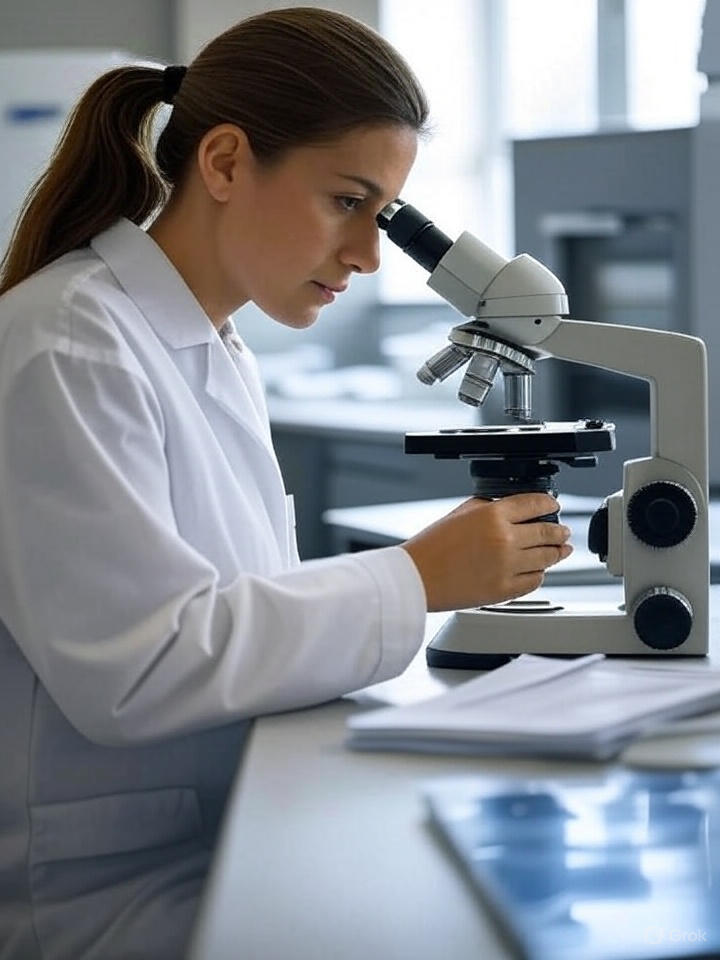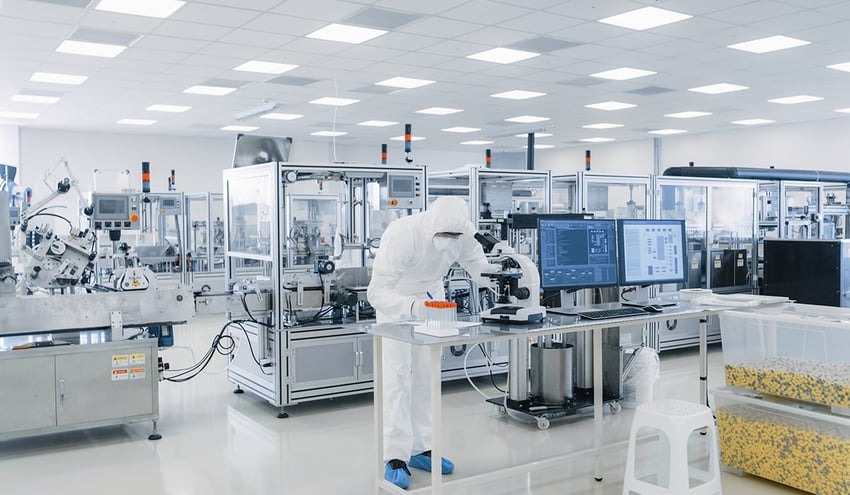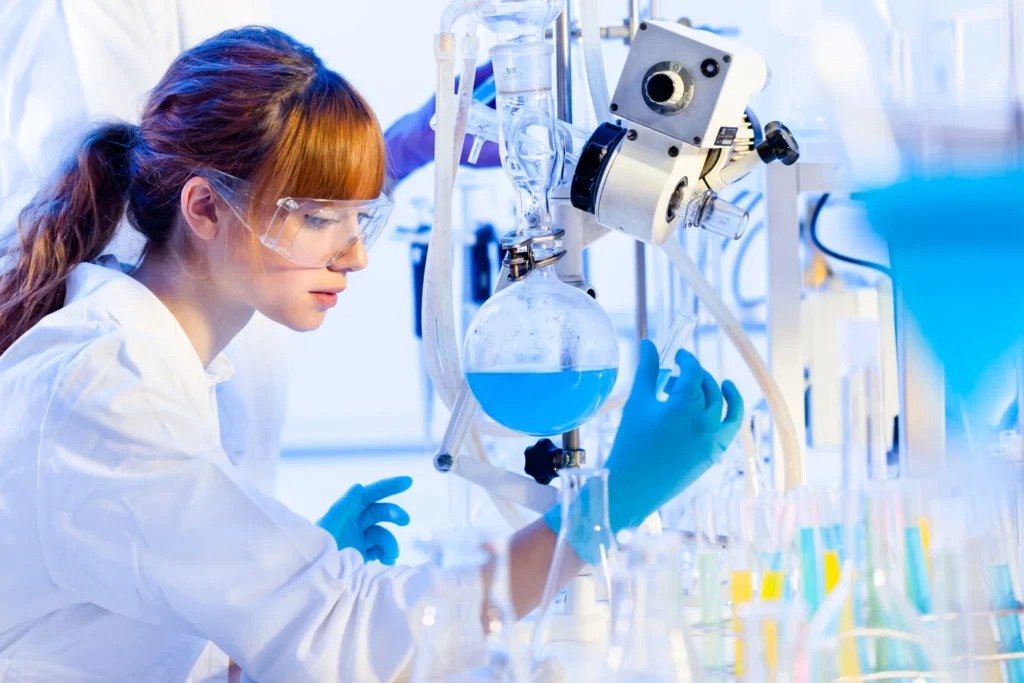The Definitive Guide for Professionals, Researchers, and Entrepreneurs
Introduction
A cytopathology laboratory is a cornerstone of modern diagnostics, research, and industrial quality control. For professionals, researchers, and business owners, establishing a cytopathology lab is a strategic investment that requires meticulous planning, regulatory compliance, and a deep understanding of technology and market needs. This comprehensive guide explores every aspect of setting up a cytopathology lab—whether for medical, research, industrial, or educational purposes. Throughout, you’ll find SEO-friendly keywords such as cytopathology lab setup, cytopathology lab equipment, diagnostic laboratory business plan, and laboratory accreditation to enhance search visibility.

What is a Cytopathology Lab?
A cytopathology laboratory is a specialized facility where cellular samples—such as fluids, smears, and tissue aspirates—are analyzed to diagnose diseases, monitor therapies, conduct research, and ensure product safety in industrial settings. Cytopathology labs play a vital role in hospitals, diagnostic centers, research institutes, pharmaceutical companies, and educational institutions.
Key Functions of a Cytopathology Laboratory
- Disease Diagnosis: Detecting and confirming diseases through microscopic and molecular analysis of cells.
- Therapeutic Monitoring: Assessing patient response to treatments and adjusting therapies accordingly.
- Research: Investigating disease mechanisms, drug development, and epidemiological studies.
- Industrial Quality Control: Testing food, pharmaceuticals, and chemicals for safety and compliance.
- Education: Training students and professionals in laboratory techniques and scientific principles.
Planning Your Cytopathology Lab
1. Define Your Lab’s Purpose
- Medical Diagnostics: Focus on patient testing and clinical services.
- Research: Emphasize experimental protocols and advanced instrumentation.
- Industrial/Quality Control: Prioritize high-throughput screening and regulatory compliance.
- Educational: Support practical training and curriculum requirements.
2. Market Analysis and Business Plan
- Target Market: Identify your primary clients—hospitals, clinics, research organizations, industry partners, or educational institutions.
- Competitive Analysis: Assess local and regional competitors, their services, and pricing.
- Regulatory Landscape: Understand licensing, accreditation, and compliance requirements (e.g., NABL, CAP, CLIA).
- Financial Projections: Estimate startup costs, operational expenses, and revenue streams12.
- Market Trends: Analyze emerging trends such as automation, digital pathology, and AI-driven diagnostics.
3. Facility and Infrastructure
- Location: Choose a site with easy access for clients and sample logistics.
- Space Planning: Allocate areas for sample reception, processing, analytical work, storage, and waste disposal.
- Utilities: Ensure reliable water supply, drainage, electricity (with backup), and ventilation.
- Sanitation: Use materials for walls, ceilings, and floors that are easy to clean and resistant to biohazards.
- Security: Restrict access to authorized personnel only.
Essential Equipment and Instruments
A well-equipped cytopathology lab should have the following core instruments:
| Equipment | Purpose/Function |
|---|---|
| Cytocentrifuge | Concentrates cells from fluids onto slides for analysis |
| Centrifuge | Separates components based on density |
| Autostainer | Automates slide staining for consistency and efficiency |
| Binocular Microscope | Visualizes cells and microorganisms |
| Flow Cytometer | Analyzes physical and chemical characteristics of cells |
| Incubator | Maintains optimal temperature for cultures/reactions |
| Spectrophotometer | Quantifies biomolecules by measuring light absorption |
| pH Meter | Measures acidity/alkalinity of solutions |
| Analytical Balance | Precise weighing of samples and reagents |
| Micro Pipettes | Accurate liquid handling |
| Refrigerators/Freezers | Stores reagents and biological samples |
| Water Bath | Maintains constant temperature for reactions |
| Vortex Mixer | Mixes solutions quickly and efficiently |
| Biosafety Cabinet | Protects samples and personnel from contamination |
| Glassware & Consumables | Beakers, flasks, pipettes, slides, Petri dishes |
| Computer & Printer | Data management and reporting |
This list covers the primary requirements for most cytopathology labs and should be tailored to your lab’s specific focus (clinical, research, industrial, or educational)5.
Laboratory Design and Workflow
Layout Considerations
- Reception and Accessioning Area: For patient registration and sample drop-off.
- Sample Collection Room: Dedicated space for drawing fluids and collecting other specimens.
- Cytology Processing Area: Treated as an infection control area, equipped with biosafety cabinets and fume hoods.
- Staining Area: Well-ventilated, with fume hoods for safe handling of chemicals like xylene and methanol.
- Analytical Section: Houses major instruments and testing stations.
- Reporting and Archiving Area: For data analysis, result validation, and secure storage.
- Storage: For samples, reagents, and hazardous materials.
- Waste Management: Dedicated area for safe disposal of biohazardous and chemical waste345.
Workflow Optimization
- Unidirectional Flow: Ensure samples move in one direction to minimize cross-contamination.
- Zoning: Separate clean and contaminated areas.
- Automation: Implement Laboratory Information Management Systems (LIMS) for tracking and reporting.
- Lean Methods: Use open work areas for visual management and minimize walking distances for staff39.
Staffing and Training
Key Personnel
- Lab Director/Manager: Oversees operations, compliance, and quality assurance.
- Cytopathologists: Interpret test results and supervise laboratory processes.
- Medical Laboratory Technologists: Perform routine and specialized analyses.
- Technical Assistants: Support sample processing and equipment maintenance.
- Administrative Staff: Handle billing, logistics, and customer service.
Training and Competency
- Initial Training: On SOPs, equipment use, and safety protocols.
- Ongoing Education: Updates on new technologies, quality standards, and regulatory changes.
- Competency Assessment: Regular evaluation to ensure proficiency and compliance.
Safety and Quality Assurance
Safety Measures
- Personal Protective Equipment (PPE): Lab coats, gloves, eye protection, and masks.
- Biosafety Cabinets: For handling infectious materials and procedures that generate aerosols.
- Chemical Safety: Proper storage, labeling, and handling of reagents.
- Fire Safety: Extinguishers, alarms, and emergency exits.
- Waste Disposal: Segregation and safe disposal of biological and chemical waste.
- Universal Precautions: Treat all specimens as potentially infectious; process under laminar flow hoods and use disposable gloves, gowns, and masks.
- Ventilation: Fume hoods are essential in staining and chemical processing areas.
Quality Control
- Internal QC: Regular calibration of instruments, use of control samples.
- External QC: Participation in proficiency testing programs.
- Documentation: Maintain detailed records of procedures, results, and incidents.
- Accreditation: Seek certification from recognized bodies (e.g., NABL, CAP, ISO.
Common Cytopathology Lab Tests
| Test Profile | Analytes/Targets | Clinical Relevance |
|---|---|---|
| Pap Smear | Cervical cells | Cancer screening, cytological diagnosis |
| Fine Needle Aspiration Cytology (FNAC) | Cells from lumps, lymph nodes, organs | Cancer, infection, inflammatory disease |
| Body Fluid Cytology | Pleural, peritoneal, CSF, urine, sputum | Infectious disease, malignancy, inflammation |
| Immunocytochemistry | Cellular antigens | Tumor classification, infectious diseases |
| Molecular Cytopathology | DNA/RNA analysis | Genetic disorders, infectious diseases |
These tests form the backbone of clinical diagnosis and patient management.
Regulatory Compliance and Accreditation
- Licensing: Obtain necessary licenses from local and national authorities (e.g., State Government License, NABL, CLIA).
- Accreditation: Demonstrates adherence to international quality standards.
- Documentation: Maintain SOPs, equipment logs, and personnel records.
- Audit Readiness: Regular internal and external audits to ensure compliance.
Budgeting and Financial Planning
Startup Costs
- Infrastructure: Renovation, utilities, and security.
- Equipment: Purchase, installation, and calibration.
- Consumables: Reagents, glassware, PPE, and disposables.
- Staffing: Salaries, training, and benefits.
- Licensing and Accreditation: Application fees and inspection costs12.
Operational Expenses
- Reagent and Consumable Replenishment
- Equipment Maintenance and Service Contracts
- Utilities (Electricity, Water, Internet)
- Waste Disposal Services
- Insurance (Liability, Fire, Theft)
Revenue Streams
- Diagnostic Testing Services
- Research Contracts and Grants
- Training and Educational Programs
- Consulting and Quality Assurance Services
Develop a detailed business plan with financial projections to attract investors and manage growth.
Marketing and Growth Strategies
- Digital Marketing: optimized website, social media, and online advertising.
- Partnerships: Collaborate with hospitals, clinics, and research organizations.
- Quality Differentiation: Emphasize accreditation, turnaround time, and advanced technology.
- Customer Service: Reliable reporting, transparent billing, and responsive support.
- Continuous Improvement: Invest in staff training, equipment upgrades, and new test offerings.
Trends and Innovations in Cytopathology
- Automation and Robotics: Increase throughput, reduce errors, and improve reproducibility.
- Digital Pathology: Integration of digital imaging and remote diagnostics.
- Molecular Diagnostics: PCR, next-generation sequencing, and genetic profiling.
- Artificial Intelligence: Data analysis, pattern recognition, and predictive diagnostics.
- Sustainable Practices: Green chemistry, energy-efficient equipment, and waste reduction.
Checklist for Setting Up a Cytopathology Lab
- Define lab purpose and scope
- Conduct market and competitor analysis
- Prepare a detailed business plan
- Secure funding and location
- Design lab layout and workflow
- Procure essential equipment and consumables
- Recruit and train qualified staff
- Implement safety and quality protocols
- Obtain necessary licenses and accreditations
- Launch marketing and outreach initiatives
Conclusion
Establishing a cytopathology laboratory is a complex but rewarding endeavor that blends science, business, and regulatory compliance. By following best practices in planning, infrastructure, equipment selection, staffing, safety, and quality assurance, you can build a lab that meets the needs of healthcare, research, industry, or education. Stay updated with technological advancements and regulatory changes to ensure your lab remains competitive and compliant.
Keywords Used
- cytopathology lab setup
- cytopathology lab equipment
- diagnostic laboratory business plan
- laboratory accreditation
- laboratory safety protocols
- cytopathology tests
- laboratory workflow
- laboratory quality control
- clinical diagnostics
- research laboratory
- laboratory automation
- laboratory compliance
- laboratory marketing strategies



